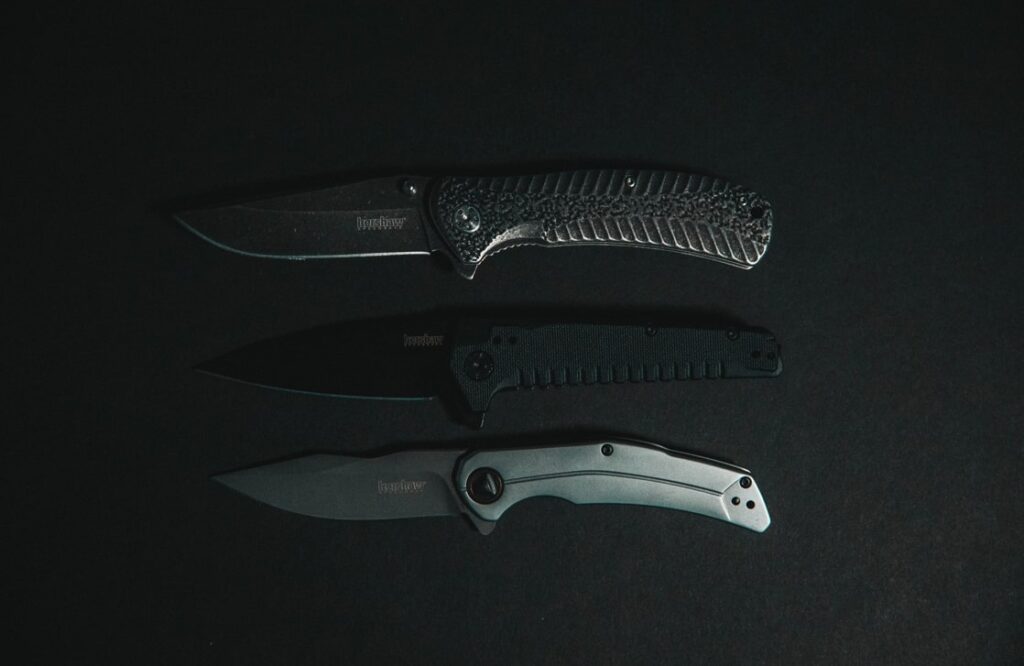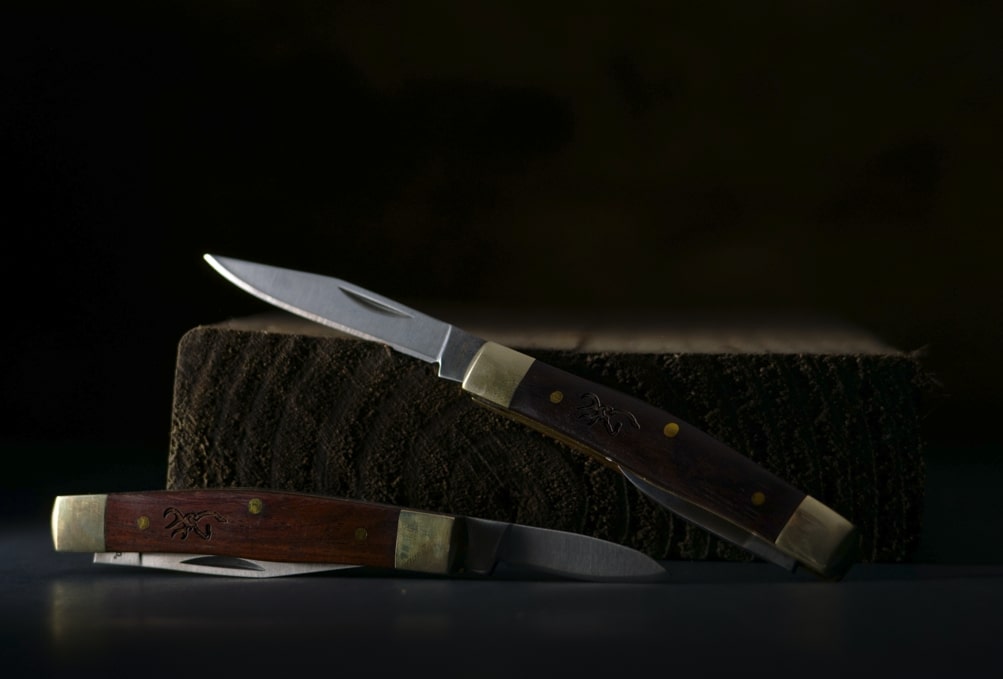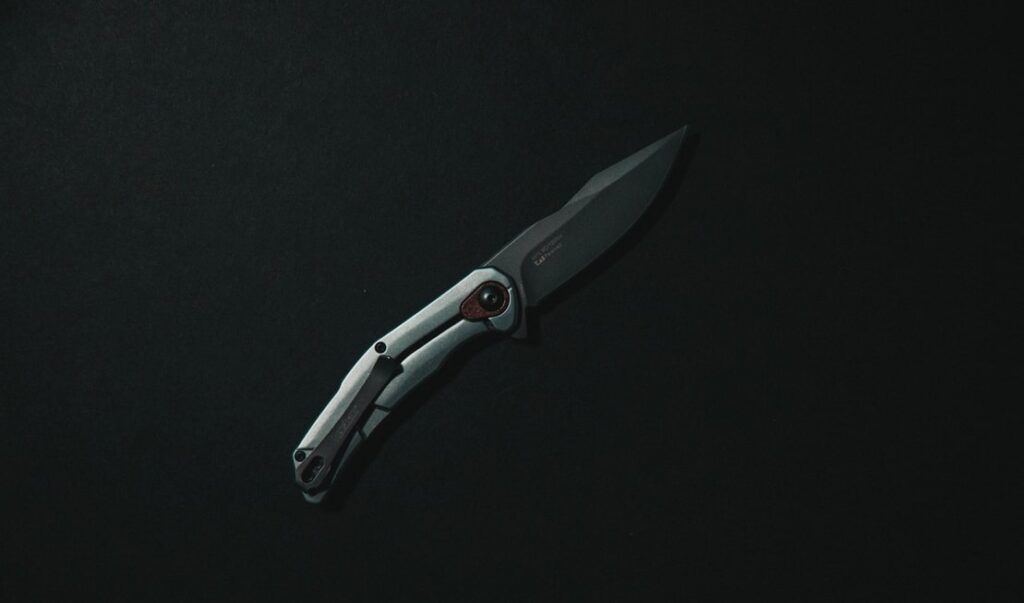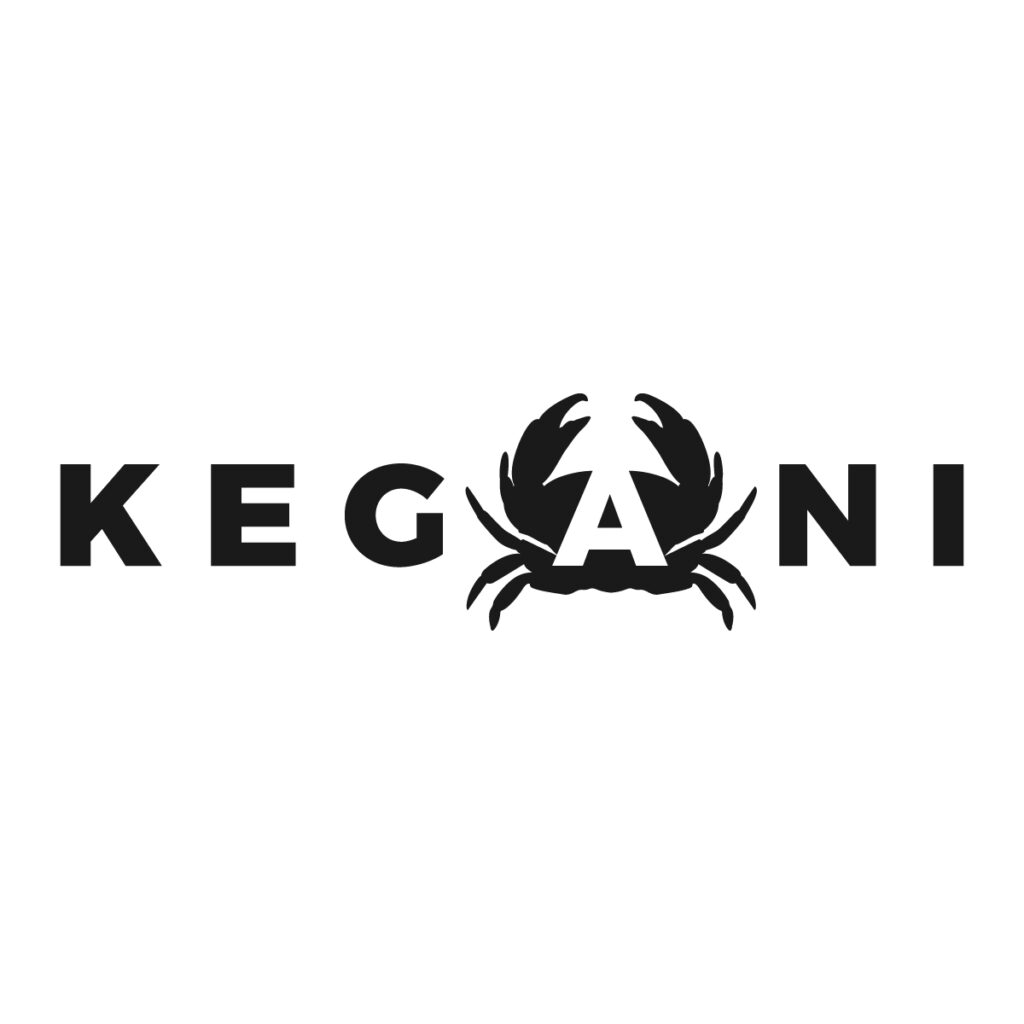The first thing come to mind before any pocket knife purchases is a simple question: fixed blade or folding blade?
Fixed blade knives, often characterized by their solidity and reliability, consist of a single piece of metal that extends into the handle, making them typically stronger and more durable. They’re preferred in survival situations and are the go-to for rigorous tasks that require a dependable tool.
Folding knives, on the other hand, offer the convenience of being compact and safe to carry. They come with a locking mechanism that secures the blade in the open position, which makes them almost as stable as fixed blade knives during use. The portability of folding knives also appeals to many. They are versatile tools for general-purpose use, be it opening boxes, preparing food, or as an adjunct tool for hobbies like camping or fishing.
As you weigh the choice between fixed blade and folding knives, it’s crucial to understand their distinct advantages. In the following sections, we delve deeper into the factors influencing this decision, considering practicality, versatility, and intended use. Don’t miss out—read on and discover the ideal pocket knife for you!
Anatomy of fixed blade and folding knives

The anatomy of both pocket knife types remains essentially identical, including parts like a handle, blade, tip, and edge. However, their constructions differ, with fixed blade knives having sturdy, unmoving blade, while folding knives have moving blades with locks and openers for blade folding. Fixed-blade knives may also feature a bolster—a finger guard that protects you from accidents. Meanwhile, folding knives may include a variety of small add-ons.
In terms of materials, both knives utilize a range of steels, but fixed-blade knives showcase more versatility in handle materials, including wood and G10, whereas folding knives lean towards steel, titanium, and similar materials for their handles.
Size and portability
When comparing fixed blade knives with folding knives, size and portability are crucial for most customers that will ultimately make a purchase.
Blade and handle size
Fixed blade knives typically have longer and wider blades, as they do not need to fold into a handle. Their handles are also designed to ensure a good grip and may contribute to the overall length. Common fixed blade sizes range from 3 to 12 inches in blade length.
Folding knives offer a compact size when closed, and their blade-to-handle ratio is engineered to maximize portability without sacrificing usability. You can commonly find folding knives with blades between 2 to 7 inches, suitable for everyday carry in your pocket.
Ease of transport
Folding knives excel in portability. They are designed to literarily be pocket knives, meaning they can be easily slipped into your pocket without a noticeable bulge. Often assisted by a pocket clip for secure carry. Their foldable nature allows for a compact form factor, essential for everyday carry.
In contrast, while fixed blade knives offer a sturdy and reliable blade, they are less convenient to transport due to their size. They typically require a sheath and might be carried on your belt, which is not as discreet or space-saving as a knife in your pocket.
The choice between a fixed blade or a folding knife for portability will likely hinge on whether your customers prioritize compact size and discretion over blade length and ease of access.
Use cases

Before choosing a pocket knife to sell in your store, the intended use of the knife is crucial as it determines the selling point of your product. Knowing what your customers expect is important in choosing either a fixed blade or folding knife, as both types have their specific applications where they excel.
Everyday carry and urban use
For everyday use in urban environments, a folding knife is often preferred due to its portability and convenience. Folding knives fit easily into pockets or on a keychain, making them ideal for everyday carry. Their compact design allows for discrete carry, which is fitting for urban settings where a larger knife might not be appropriate.
Outdoor and survival scenarios
In outdoor activities such as camping and hunting, a fixed blade knife generally provides more stability and strength, making it a reliable tool for various tasks. Fixed blades are better suited for demanding work like wood processing, game processing, and shelter building, necessities in survival scenarios.
Self-Defense considerations
While knives are primarily tools, they can be wielded for self-defense in dire situations. A fixed blade can be drawn more quickly than a folder, which may be crucial in a self-defense scenario. However, your personal safety and local laws should guide your choice.
Start Working with a Professional Now
While we can’t list every use case and situation where one blade is superior to another, the general rule of thumb is that in dangerous and tough environments, a fixed blade is more competent. Folding knives serve as a backup in such situations and are a better overall choice for everyday carry.
Maintenance
Maintenance practices of the knife can significantly impact its longevity and functionality. This aspect is crucial if you don’t want unhappy customers with lots of after-sale issues.
Fixed blade knives are known for their sturdy design, which often translates to higher durability. With fewer moving parts, they are less prone to wear and tear over time.
Your maintenance routine for a fixed blade is generally simpler, as it lacks the fold. This means there are no crevices where dirt and grime can accumulate, potentially compromising the knife’s integrity. Folding knives can be more challenging to sharpen due to their smaller size and the need to navigate around the handle.
Design variations

In evaluating fixed blade knives and folding knives, you’ll discover that both types come with an array of blade shapes and handle designs. Each variation serves specific functions and end-uses.
Blade shapes
Fixed blade knives typically offer a stable and robust blade setup. You can find straight-back blades, ideal for chopping and slicing due to their heavier spine, or clip-point blades which provide a sharper point for precision tasks. Folding knives often feature a drop-point blade, well-suited for general use and capable of strong tip strength. Another popular folding knife blade is the spear-point, which is symmetrical and boasts fine control—a favorite among enthusiasts for its piercing capabilities.
Handle designs
The handle is where your interaction with the knife is most intimate, influencing grip comfort and control. Fixed blade knives often have full-tang designs, where the metal extends the length of the handle, providing increased strength and balance. These handles may be encased in a variety of materials such as wood, which offers a classic feel, and G-10, a type of fiberglass laminate that is both durable and resistant to the elements.
Folding knife handles have to incorporate the folding mechanism, which can vary from lock-back designs to frame locks, each offering different levels of security and ease of use. When considering the handle material, durability and grip are paramount. Aluminum provides a lightweight and corrosion-resistant option, while stainless steel handles add heft and solidity. Some folding knives also include pocket clips for convenience, allowing easy access and secure carry.
Legal aspects
The restrictions on the two knives vary in most places worldwide. Generally speaking, folding knives are more restricted. It is paramount to know beforehand the laws regarding the selling, possessing, and using of the knife. For both fixed blade and folding knives, it’s worth to check out the following legal restrictions:
- Intent to carry: Depending on local laws, carrying a fixed blade may be subject to different regulations, often requiring visible carry in specific types of sheaths.
- Concealed carry: Laws may have restrictions on carrying a pocket knife in a concealed manner.
- Transportation: Regulations may specify how pocket knives should be transported, often requiring secure storage during transit.
- Age restrictions: Age restrictions may also apply to pocket knives, with specific limitations on the sale and possession by minors.
Summary of pros and cons for fixed blades and folding knives
Fixed blade knives
Pros
- Sturdiness: You’ll find that fixed blades are generally more robust due to the lack of moving parts, excelling in demanding tasks.
- Reliability: With their solid construction, they’re less prone to failure and can take on heavier-duty use without worry.
- Ease of cleaning: Since they have a simple design without small crevices, they are easier to clean and maintain.
Cons
- Convenience: Their size and rigidity might pose challenges for everyday carry, as they often require a sheath and are typically larger.
Folding knives
Pros
- Convenience: Folding knives are compact, making them convenient for everyday carry in your pocket or bag.
- Versatility: They often feature a variety of blade styles and additional tools which can increase their utility.
Cons
- Sturdiness: They might not be as sturdy as fixed blades, especially under extreme stress or in survival situations.
- Maintenance: They can be trickier to clean due to moving parts and can accumulate dirt or debris in the folding mechanism.
Start Working with a Professional Now
Diversify your inventory for success
Whether it’s a fixed blade or folding knife, it’s a great choice as long as you understand your target customer base. Besides, both types can coexist! Rarely does a knife store exclusively offer only one type of pocket knife. If you’re in search of high-quality pocket knives, both folding and designed with fixed blades, explore our catalog! Reach out to us for a quote, discover how to formulate an OEM manufacturing plan, and let’s build a business for you!

